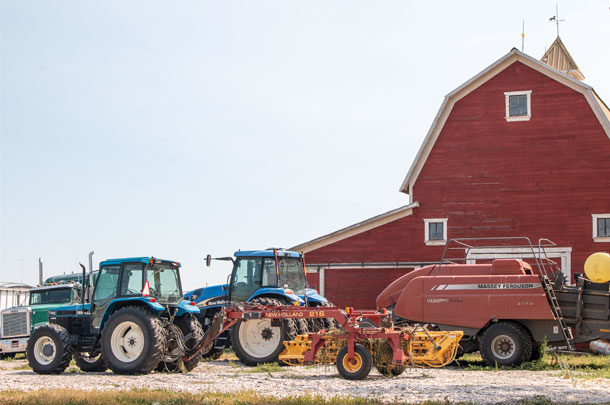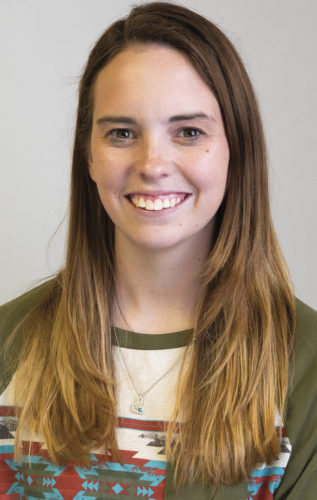Mark Barrie, a fourth-generation producer from the Idaho Falls, Idaho, area, does everything he can to produce high-quality alfalfa and is looking forward to his son becoming the fifth generation on the farm.
Barrie’s family has worked in the area since his great-grandfather arrived there around the turn of the century. From the original 80 acres his great-grandfather bought, his operation has grown into harvesting more than 600 acres of alfalfa every cutting, baled as 3X4 bales.
“You just find your niche in agriculture and stretch your wings from there,” Barrie says. For him, that niche is alfalfa.
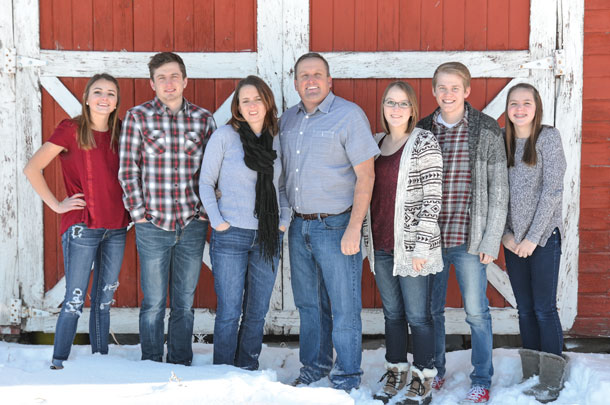
His lifelong passion for hay started when a neighbor asked 14-year-old Barrie if he’d cut his hay for him. Barrie’s father had once raised hay and still had hay equipment sitting unused. So Barrie took the International 275 gas-powered swather with no cab and cut his neighbor’s hay. “When I got that check for 140 dollars, that was a big deal to a 14-year-old kid. From then on, I knocked on every door I could find to see if they wanted me to cut hay.”
After that first summer, Barrie’s dad told Barrie to start buying his own gas. He then added an old New Holland pull-type stacker (or harrow bed) and stacked hay as well. Slowly he acquired a small baler, and at age 18, his father told him it was time he bought the swather he’d been using for free for four years. So Barrie opened a checking account, and the first check he wrote was for $2,000 to buy the swather.
After receiving his degree in accounting and working as an accountant for a few years, Barrie decided to come back and contribute to the family farm he grew up on. Since then, Barrie has molded the operation to make it his own.
“My operation fits my personality,” Barrie says. “It takes a lot of early mornings and late nights, but we do our best to make it work any way we can.” Barrie also grows malt barley and says this grain has been part of the operation since his dad owned the business. And he still does custom haying. “In order to have the balers I wanted, I needed to do custom work to justify the price of buying one,” he says. And it still provides a revenue stream for the farm.
Part of his process of “making it work” is to implement an aggressive herbicide program and keep up with pesticides to ensure the alfalfa stand lasts as long as possible. Barrie says his goal is to get six or seven years out of each stand, and keeping competition in the field minimal for the plants is crucial to reaching his goal. Until about five years ago, he extended the life of his alfalfa fields by interseeding orchardgrass. As the orchardgrass slowly took over, it carried the fields another two or three years before it had to be rotated.
Barrie’s focus is on producing high enough quality hay so he can ship it anywhere with confidence. “I consider hay to be more of a senses crop,” Barrie says. “You have to be able to touch it and smell it to know what it’s worth, unlike wheat or barley.”
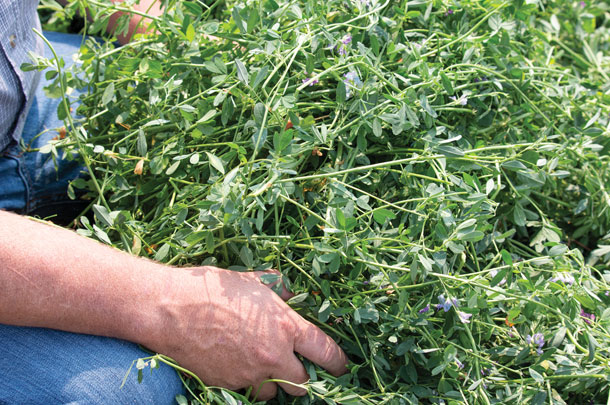
Part of the process of producing quality hay is learning to be critical of your own hay, Barrie says. The cheapest place to sort hay is at the stack, before the cost of freight is added to the bale, he says.
Peggy Barrie, Barrie’s wife, says she believes the advantage in alfalfa to Barrie is the ability to market his own alfalfa. Barrie agrees. While his father fed any hay he grew to livestock on the farm, Barrie has enjoyed the marketing aspect. He says one of the highlights of his operation is the chance to meet people from all over the country looking for high-quality alfalfa and being able to market his product to them.
“The opportunity I have had to get to know really good people from all over the place has been really enjoyable for me,” says Barrie. “Unfortunately, it’s not a matter of if you’ll get a bad customer, but when. Always make sure you are dealing with honest people. I’ve had the chance to meet some really honest people.”
Although the goal is to produce high-quality alfalfa, Barrie struggles with factors he can’t control that affect the quality of his alfalfa.
“We can’t control the weather,” Barrie says. “In a three-cut system, that means hay will be exposed for about two to three weeks out of the summer. It’s just unrealistic to think some of it won’t get rained on. All of a sudden, your high-quality alfalfa could become feeder hay because of some unpredicted rain. Sometimes you just want to go home and cry in a pillow because some really pretty hay got ruined. That’s why it’s important to have more than one market for your hay. You always need a place for the off-quality hay to go.”
“I want to load my hay on trucks and watch it go out with confidence wherever it can go,” says Barrie. Although Barrie sells some of his hay locally, including to local dairy producers, he prefers his product to not be limited to the local market, and he prefers not to limit it to dairies. “If you only sell to dairies, you’ll get beat up. That’s why I’ve pushed more hay into the export market – at least it gives me options.”
The trucking business he runs to diversify his business also helps ensure he can transport his hay wherever needed. His fleet of seven trucks stays busy on the road, and Barrie says he tries to leverage the trucking in with the hay sale, even though it’s a separate business entity. For instance, if the hay is sold within a 500-mile radius, he gives two prices – one for the price of hay in the stack and one for shipping. But it’s a better deal for both him and the buyer if the trucking is contracted together with the hay purchase.
And he’s picky about his truck drivers. Barrie says a lot of truck drivers aren’t careful with the tarps, thinking, “Well, it’s just hay; it doesn’t matter if it gets a little wet.” But to Barrie, he stresses to the truck drivers, “You don’t understand. This is hay! So be careful and watch those tarps.”
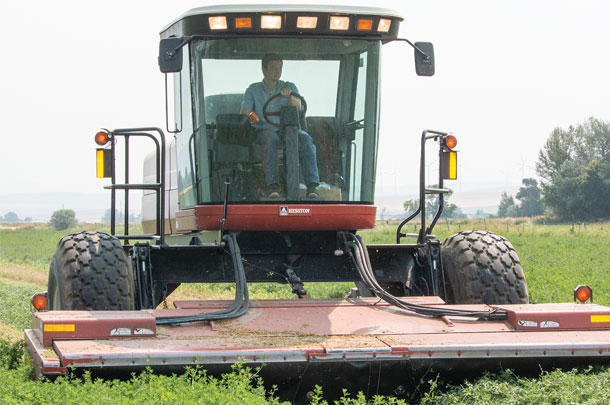
Barrie’s son, Cody Barrie, is working alongside his dad now to learn the keys of producing high-quality alfalfa, and one day hopes to take over the family business. “My dad wouldn’t let me come back to the farm without a college degree, and we’ve made that a priority for our family as well,” Mark Barrie says. Cody will graduate in 2019 with a degree in mechanical engineering.
For now, Barrie will focus on continuing to do everything he can to produce high-quality alfalfa, load it on a truck and market it wherever he can best get compensated for his hard work. ![]()
PHOTO 1: Barrie does some custom work to justify owning the equipment he wants. Photo by Cassidy Woolsey.
PHOTO 2: (Left to right) Allison, Cody, Peggy, Mark, Lindsey and Trent Swenson, and Lauren Barrie make up the haying crew at Barrie Hay and Grain. Photo provided by Mark Barrie.
PHOTO 3: Mark Barrie kneels next to a fresh-cut row of alfalfa. Photo by Cassidy Woolsey.
PHOTO 4: Cody Barrie will be the fifth generation to return to the family farm after graduating this year. Photo by Cassidy Woolsey.
Joy Hendrix is a freelance writer currently based in Oklahoma.
